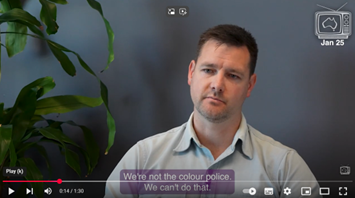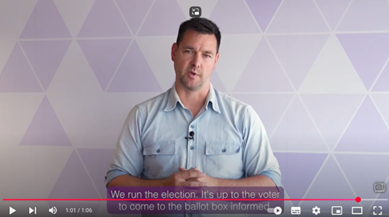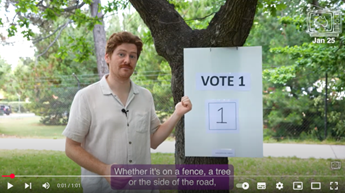Australian Electoral Commission



With the 2025 federal election now formally underway the AEC has today encouraged political parties, candidates and others to adhere to the rules around campaigning, and to engage respectfully.
Australian Electoral Commissioner Jeff Pope said that civility has always been a key part of what makes Australian elections precious and admired internationally.
“Political campaign messages and campaign workers are a critical component of a federal election - our experience is that in almost every instance campaigning activity adheres with the law and is done in a civil manner,” Mr Pope said.
“We want to see this continuing to be the case in 2025.”
An authorisation statement is required for electoral communication to help voters identify the source of what they're seeing, hearing or reading.
“With so many formats of communication used for election campaigning, it is more important than ever to check the specific requirements for authorisation statements,” Mr Pope said.
“As always, the AEC’s advice is that if you are in any doubt, authorise.”
The AEC has continually expressed a preference for candidates, political parties and other campaigners not to use the colour purple in their communication with voters.
“The use of the colour purple itself is not prohibited but it should absolutely not be used in a way that could be confused for AEC communication,” Mr Pope said.
“If this was to occur, depending on the exact circumstances it could be a breach of s329 of the Electoral Act.”

AEC TV video: Colours in campaigning
There are no laws relating to truth in federal election communication, with one exception. Section 329 of the Electoral Act addresses misleading or deceptive communication specific to the act of casting a vote.
“The distinction for us is really clear – if people are communicating about the electoral process, then it’s appropriate for the AEC to be an active part of the conversation,” Mr Pope said.
“If communication can mislead a voter about how to complete a ballot paper, then there is a potential offence that could apply under electoral laws.”

AEC TV video: Truth in campaigning
Anyone communicating with voters about the election process should ensure the accuracy of that information.
The AEC has a range of information available about how federal elections work. This includes information about managing the electoral roll, planning voting services, preferential voting, the counting process and much more.
“We’re active in communicating about election processes through our advertising, community engagement, social media activities and with items being added to the AEC disinformation register,” Mr Pope said.
When voting centres are in operation, campaign signage and party workers must be at least six metres from the entrance to the venue.
“Outside of the six-metre rule, the AEC does not regulate the placement or quantity of campaign signage,” Mr Pope said.
“Campaigners should review guidance from the relevant local council regarding the placement of signage. If there is an issue or a dispute it is potentially a matter for the local council or the police.”

AEC TV video: Signage outside polling places
In January, the AEC launched a range of new educational material to assist voters to navigate the complex communication environment during the federal election.
“Our stop and consider campaign is now in the marketplace, we’re communicating actively and we really encourage any voter who is not sure of campaigning rules or material to visit our voter’s guide,” Mr Pope said.
Media resources: